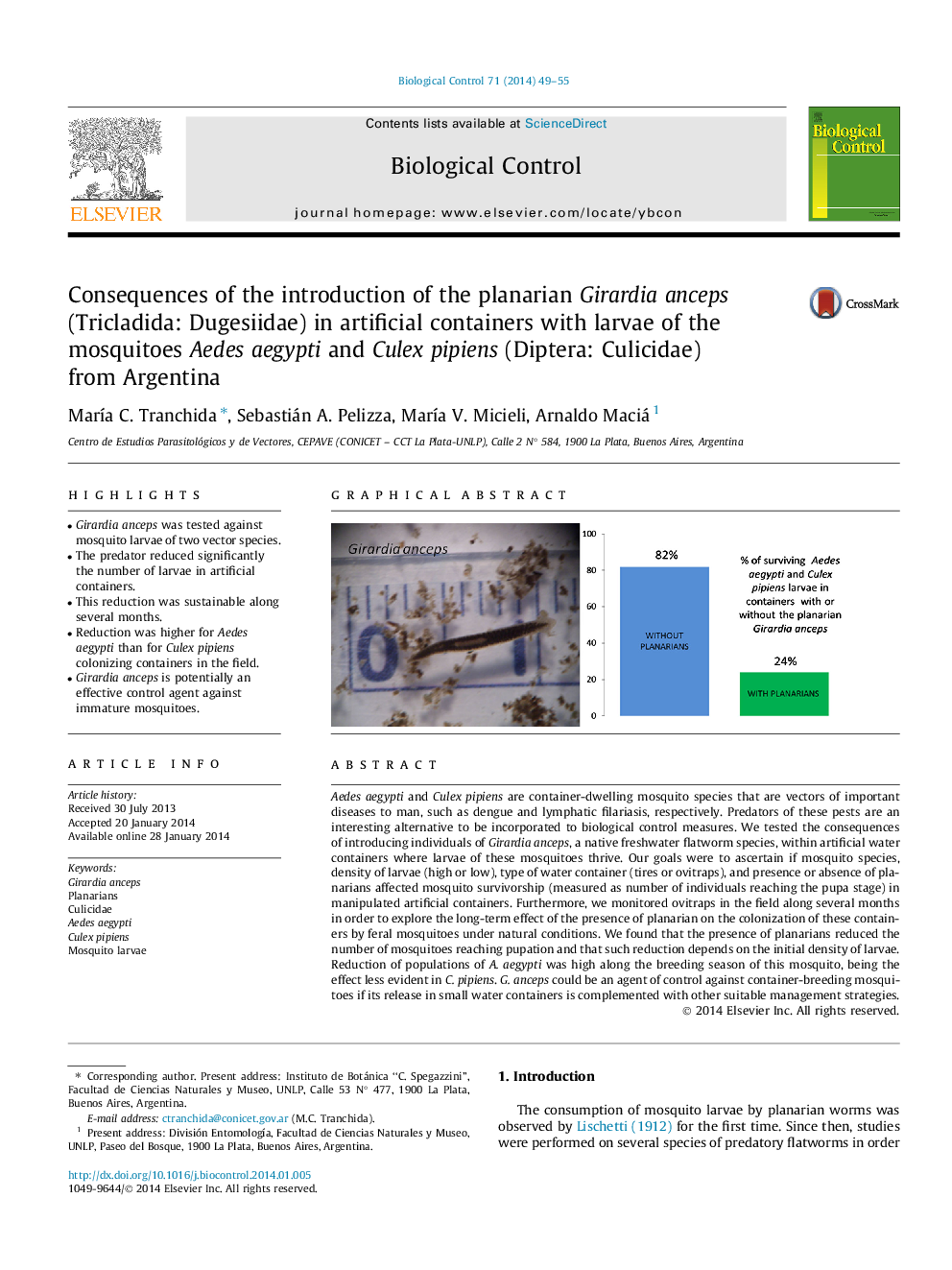| کد مقاله | کد نشریه | سال انتشار | مقاله انگلیسی | نسخه تمام متن |
|---|---|---|---|---|
| 4503948 | 1624263 | 2014 | 7 صفحه PDF | دانلود رایگان |

• Girardia anceps was tested against mosquito larvae of two vector species.
• The predator reduced significantly the number of larvae in artificial containers.
• This reduction was sustainable along several months.
• Reduction was higher for Aedes aegypti than for Culex pipiens colonizing containers in the field.
• Girardia anceps is potentially an effective control agent against immature mosquitoes.
Aedes aegypti and Culex pipiens are container-dwelling mosquito species that are vectors of important diseases to man, such as dengue and lymphatic filariasis, respectively. Predators of these pests are an interesting alternative to be incorporated to biological control measures. We tested the consequences of introducing individuals of Girardia anceps, a native freshwater flatworm species, within artificial water containers where larvae of these mosquitoes thrive. Our goals were to ascertain if mosquito species, density of larvae (high or low), type of water container (tires or ovitraps), and presence or absence of planarians affected mosquito survivorship (measured as number of individuals reaching the pupa stage) in manipulated artificial containers. Furthermore, we monitored ovitraps in the field along several months in order to explore the long-term effect of the presence of planarian on the colonization of these containers by feral mosquitoes under natural conditions. We found that the presence of planarians reduced the number of mosquitoes reaching pupation and that such reduction depends on the initial density of larvae. Reduction of populations of A. aegypti was high along the breeding season of this mosquito, being the effect less evident in C. pipiens. G. anceps could be an agent of control against container-breeding mosquitoes if its release in small water containers is complemented with other suitable management strategies.
Figure optionsDownload as PowerPoint slide
Journal: Biological Control - Volume 71, April 2014, Pages 49–55